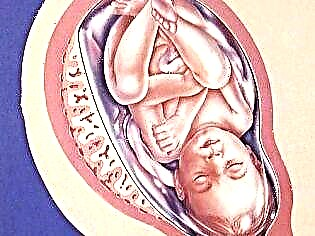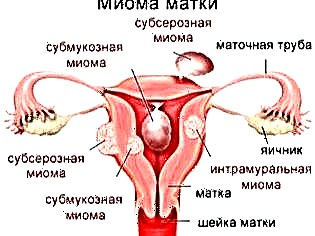
The low location of the placenta scares expectant mothers and causes them a lot of fears about the outcome of pregnancy and childbirth. What is its danger and what to do if the diagnosis of "low placentarity" has already sounded, we will tell in this material.

What it is
The placenta is a unique organ. It only appears during pregnancy and disappears after the baby is born. The task of the placenta is to provide the baby with nutrition, the delivery of all substances, vitamins, and oxygen necessary for its normal growth and development. At the same time, the placenta helps to remove metabolic products of the crumbs into the mother's body.
Placenta previa is a concept that designates the location of this temporary and very necessary organ in the uterine cavity. Presentation is always a pathology, because the term itself has the meaning of finding the placenta on the path along which the child will need to pass during childbirth.
Normally, the place of attachment of the placenta should be such that the baby's “childish place” does not interfere with being born. When it comes to presentation, this means that the placenta is located low, partially or completely blocked the exit to the small pelvis.

Low placentation is common in early pregnancy. Up to 20 weeks of pregnancy, partial or marginal presentation is recorded in about 10% of pregnant women. But the placenta has the property of rising above the cervical region, following the walls of the uterus growing with the fetus. Therefore, by the 30th week of pregnancy, only 3% of pregnant women have presentation, and by 40 weeks - only 0.5-1% of expectant mothers. The process of raising the placenta above is called migration.


The placenta is finally formed only by 10-12 weeks of pregnancy. Prior to this, the place of "ingrowth" of the ovum into the endometrium is called the chorion. Presentation is of three types.
- Complete - the internal pharynx is completely covered by the placenta. This is a very dangerous threatening condition in which spontaneous childbirth is impossible and there is a high probability of death of the fetus or mother as a result of spontaneous massive bleeding.
- Incomplete - the placenta partially covers the internal os of the cervix. Independent natural childbirth, in most cases, is also impossible, the danger for the baby and mother is great.
- Low or low - the placenta is located above the entrance to the cervical canal, but the distance from it to the "child's seat" does not exceed 7 centimeters. The internal pharynx is not closed by the placenta. If the "baby's place" is too low and affects the edge of the pharynx, presentation is called marginal.
Natural childbirth with such a placenta previa is quite possible, however, they will require special attention from doctors, and from pregnant women - extreme caution in the process of bearing a fetus.

Doctors can determine the type and degree of presentation by means of an ultrasound scan. At each scheduled ultrasound of the placenta, close attention is paid. Its localization along the front or back wall of the uterus is determined, and the distance from the internal pharynx (the entrance to the cervical canal) to the edge of the "child's place" is measured.
If it is at least 3 centimeters, a diagnosis of "low placentation" or "first degree of placenta previa" is made.
It should be noted that the lower presentation is the safest of all three types of presentation. The forecasts of doctors with him are more favorable, but such an arrangement of the "child's place", of course, is not a variant of the norm either. Certain dangers and risks exist.

Causes of low placentation
By and large, it is almost impossible to somehow influence the placenta formation site. It will appear where it will be possible to gain a foothold in the ovum at the time of implantation.
A fertilized egg is implanted into the uterine cavity approximately 8-9 days after fertilization, from that moment a chorion is formed, which subsequently becomes the placenta. It is impossible to determine exactly where the fertilized egg will "float". But there are risk factors that increase the likelihood that the blastocyst will anchor too low.
First of all, these factors include pathologies of the structure of the uterus, diseases of the woman's reproductive system, the consequences of surgical interventions.

So, in women suffering from inflammatory processes of the endometrium, having undergone abortion or other curettage, with a history of cesarean section, the chances of low placentation during subsequent pregnancy are higher. Such reasons are called uterine or intrauterine. These include:
- endometriosis;
- operations performed on the uterus - (abortion, removal of fibroids, diagnostic curettage, cesarean section);
- complicated previous childbirth;
- uterine fibroids;
- underdevelopment and abnormal congenital structure of the body of the uterus;
- incompetence of the cervix (isthmic-cervical insufficiency);
- pregnancy with several fetuses at the same time.


The reason for the fixation of the ovum in the lower part of the uterus may be enzyme deficiency of the membranes themselves. Such reasons for the development of a low placenta are called fetal. These include:
- hormonal disorders in a woman;
- inflammatory diseases of the appendages, fallopian tubes, ovaries.
In repeated pregnancies, a low placenta is more likely than in the first pregnancy. The more a woman gives birth, the higher the likelihood of developing a lower placentation with each subsequent pregnancy.


It is believed that both overweight women and women who have not been able to quit smoking with the onset of pregnancy are at risk. If in the previous pregnancy the placenta was located low, with a high probability, according to experts, the "child's place" will be located below and in the subsequent pregnancy. In addition, there is a certain genetic dependence - a woman can inherit a tendency to lower placentation from her own mother.

Diagnosis and symptoms
A low placenta previa may be indicated by spotting at any stage of pregnancy. The doctor may be confused by the increased values of the height of the fundus of the uterus, which are ahead of the actual period of pregnancy, as well as the incorrect location of the fetus in the uterine cavity - the pelvic or transverse presentation of the baby is often accompanied by low placentation.
Bloody discharge from the genital tract with lower placenta previa usually first appears after 12-13 weeks of pregnancy. They can be more or less abundant. They often last until the very birth.
But the most common bleeding in the last trimester of pregnancy, when the walls of the uterus are stretched so much that there are partial micro-detachments of the "child's place" from the uterine endometrium.

In a third of pregnant women with low placentation, such bleeding is observed after 35 weeks of pregnancy. Six out of ten women experience fairly heavy bleeding during labor. Even a careless strong cough, laughing, sex, constipation, exercise and severe stress can provoke bleeding in pregnant women with a low placenta position. Any tension of the uterine muscles is dangerous by slight detachment and exposure of blood vessels.
In women who have low placentarity manifested by episodic or persistent bleeding, low hemoglobin levels, anemia develops, low blood pressure, dizziness, and attacks of sudden weakness are often observed.
If a placenta previa is suspected, the doctor does not conduct a manual intravaginal examination, because this can provoke premature labor or bleeding, which can be fatal for both the fetus and the pregnant woman.

Ultrasound scanning is considered the best diagnostic method. Ultrasound allows you to determine the position of the "child's seat" with millimeter accuracy.
Sometimes the low position of the placenta has no symptoms. The woman does not complain about anything, and only the ultrasound doctor at the next examination draws attention to the fact that the "child's place" is lower than she would like. In this case, more careful monitoring of the state of the placenta is required: control ultrasounds designed to track the migration process are prescribed and carried out at 12, 20 (or 21-22) weeks and at 30 weeks. More frequent scans may be recommended if necessary.

Dangers and risks
What threatens a low placental location is not difficult to guess. In the early stages, it is dangerous with the threat of spontaneous miscarriage, and at a more solid gestational age, with the threat of premature birth. In women with such a problem at the end of the second and third trimesters, gestosis often develops, which only increases the risks of an unfavorable outcome. Half of pregnant women have iron deficiency anemia.
If the placenta is formed in the early stages and is attached low, then the probability that the child will take an incorrect position in the uterine cavity increases by 50%. The child will instinctively choose a position in which his head will not come into contact with anything, including the placenta.

The baby with a high degree of probability will not accept a cephalic presentation, but a breech presentation, which will greatly complicate the process of childbirth or even be an indication for a cesarean section.
For a baby, a low-lying placenta is a risk factor for the likelihood of developing hypoxia. Prolonged chronic oxygen starvation can cause the death of a baby, irreversible changes in the structures of his brain.
Also, placental insufficiency, which develops if the "baby seat" is omitted, can lead to a delay in fetal development. The lower part of the uterus is less well supplied with blood than the body and the fundus of the uterus, which is why the baby will receive less nutrients it needs.
The abnormal location of the organ feeding the baby is dangerous. If the placenta is attached low, a woman at any time may experience bleeding, which can have very sad consequences.

Treatment
Despite the level of modern medicine, there is no universal way to treat low placentation. There are no such pills and injections to raise the "child's place" higher. We can only hope that migration will happen on its own, and in most cases this is exactly what happens.
The task of doctors is to quickly cope with periodic bleeding and maintain pregnancy as long as possible: until the baby is fully viable. Compliance with medical recommendations is a top priority for every pregnant woman with a low placenta.
To reduce the tone of the uterus, antispasmodic drugs are prescribed: "No-shpa", "Papaverine", "Ginipral". To replenish the iron deficiency of a pregnant woman, it is recommended to take courses of iron preparations "Ferrum Lek", "Sorbifer". For better uteroplacental blood flow, to eliminate the symptoms of delayed development of the baby, fetoplacental insufficiency, "Curantin", "Trental" are recommended, as well as folic acid, B vitamins, "Ascorutin" and vitamin E in large therapeutic doses.
Quite often, a woman is recommended to daily administration of magnesium solution intramuscularly (10 ml each) and Magne B 6 tablets twice a day. If there is hormonal deficiency, prescribe "Utrozhestan" or "Duphaston" in an individual dosage. With an asymptomatic course, you can be treated at home, with frequent episodes of bleeding, it is recommended to undergo treatment in a day hospital at a gynecological specialized clinic.
In a later period, a woman more often than other pregnant women will have to visit a gynecologist and do CTG of the fetus to make sure that the baby's cardiac activity is normal and that there is no pronounced oxygen starvation. Drug therapy is likely to continue until birth if the placenta does not rise.

Recommendations for the expectant mother
As already mentioned, a woman will have to be extremely careful. She is prescribed a calm regime, stressful situations, physical activity, lifting weights, bending forward are contraindicated for her. With a low placenta, you should not jump, travel on uneven roads by car or bus for any period of time, because shaking can provoke severe bleeding.
A woman should not have sex because orgasm stimulates the uterine muscles, which will increase the likelihood of placental abruption. Not only direct sexual intercourse is prohibited, but also other forms of sexual satisfaction - oral, anal sex, and masturbation. Any action that can lead to a contraction of the uterine muscles is contraindicated.

Traveling by air is also undesirable. The optimal position for rest (and you need to rest in any free minute) is lying on your back with your legs thrown upside down. If you can't lie down (the woman is at work), you should raise your legs higher while sitting.
To do this, you can use a small impromptu footrest.

How to give birth?
With low placentation, childbirth can take place both naturally and by surgical operation - caesarean section. The final decision on the tactics of obstetric care is determined at approximately 35-36 weeks of pregnancy based on the results of the control ultrasound.
If the placenta has not risen, most likely, doctors will recommend prompt delivery. Caesarean section is done if a woman has a low-lying placenta combined with a pelvic or transverse presentation of the fetus, if she is pregnant with twins or triplets, if the uterus has scars from previous surgical interventions.
They are also trying to send pregnant women over 30 years of age who have undergone several abortions and have a burdened gynecological history for surgery. If the pregnancy is accompanied by regular bleeding, a planned caesarean section may also be considered.

Sometimes the need for emergency surgical intervention arises already during childbirth, for example, if the bleeding does not stop after the passage of water, if there is a weakness of the labor forces.
In the absence of bloody discharge, a ready and mature cervix, normal size of the pelvis, a medium-sized child who is in the cephalic presentation, independent childbirth is allowed.
Stimulation of labor with medicines with low presentation is not carried out in any case, labor should develop independently.

Reviews
According to reviews left by mothers on the Internet, in most cases, by week 30, the position of the placenta was established within normal limits. This means that the violations revealed at 20-21 weeks are not a sentence, but just a temporary difficulty. Childbirth with a low placenta also in most cases proceeded quite satisfactorily, healthy babies were born.
During pregnancy, according to women, it is quite difficult to constantly follow all the recommendations, the most difficult is the ban on intimate relationships. For many, this temporarily deteriorates relations with a spouse, pregnancy proceeds against a background of worries and stress.

For information on the danger of low placenta previa, see the next video.



